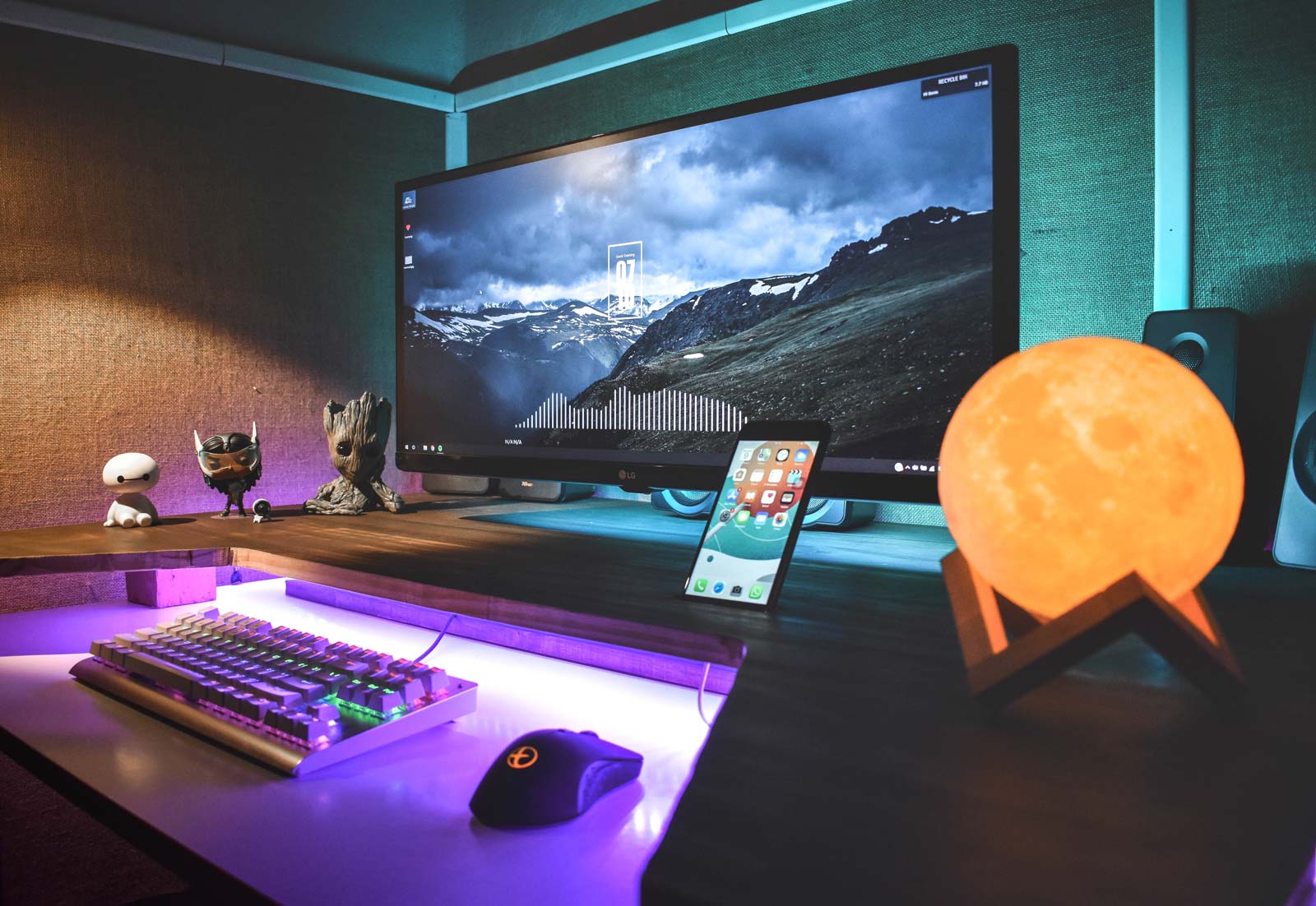Monitors with a 1920×1080 (FHD) resolution are still very popular today. They are easier on your graphics card and are generally cheaper than QHD and 4K monitors. 1080p monitors are good for both office work and gaming, with many gaming-oriented models featuring a 144 Hz refresh rate, which is great for fast-paced or action-packed games.
If you are in the market for the best 1080p monitors, this guide is for you. In this guide, we have compiled the top 10 products on the market. Some are designed for professional use while others are clearly built for serious gaming. We also included a couple of ultrawide monitors on this list, the ones featuring a 2560×1080 resolution.
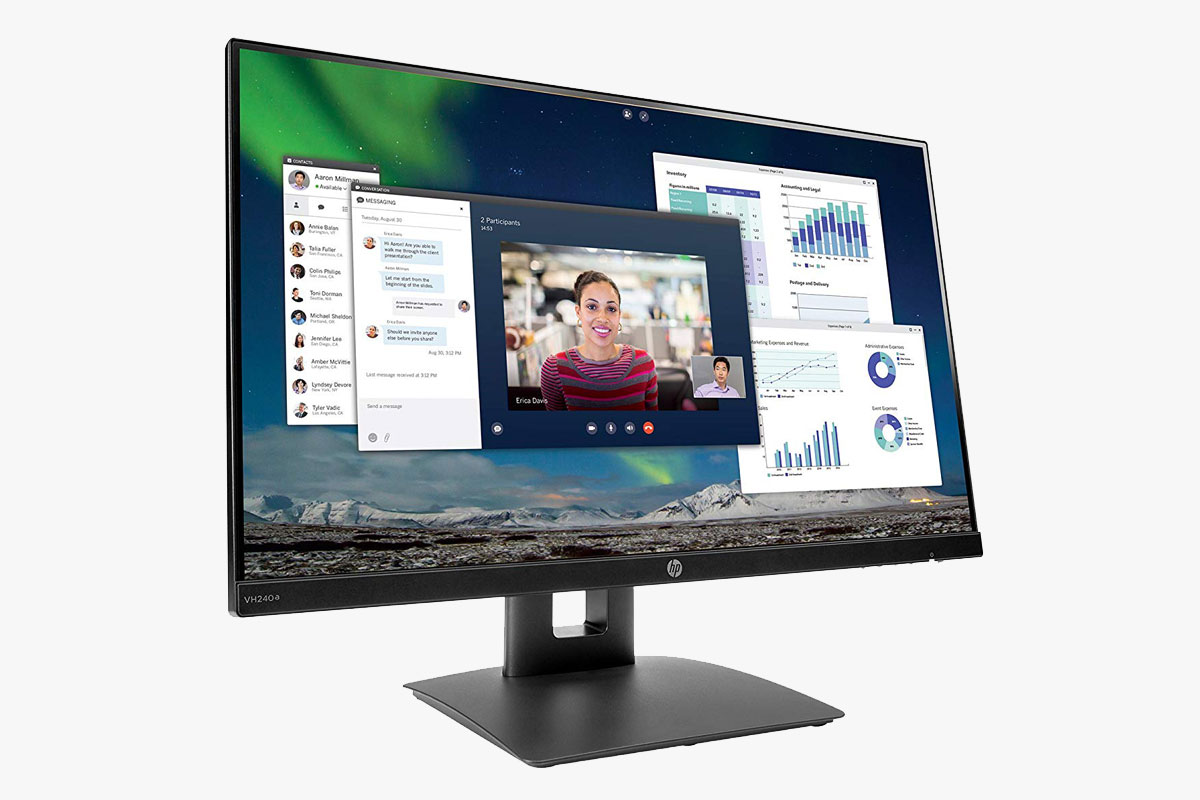 HP VH240a 1080p Monitor
HP VH240a 1080p Monitor
An IPS monitor, the HP VH240a is the best option if you want a cheap 24-inch 1080p monitor for office work and general use. You can get it for just around $100, and the best part is that it comes with a few features not normally seen in budget models – including an adjustable stand.
The VH240a has a plain design and will look good in a typical office environment, featuring thin bezels at three sides, with the control buttons located under the slightly thicker bottom bezel. For input, the monitor has one HDMI port and one VGA port, the latter of which is for connectivity with older computers. The default stand is well built and offers height and tilt adjustments, with the former being the more notable considering most budget monitors only include a fixed stand.
Featuring a standard 60 Hz refresh rate, this HP monitor is good for office work. You can use it for content writing, coding, research, and spreadsheets, among others. The picture quality is decent for a budget IPS monitor, with good viewing angles and decent brightness. Overall, this HP display is a good product and is a recommended option if you want a basic office monitor that won’t break the bank.
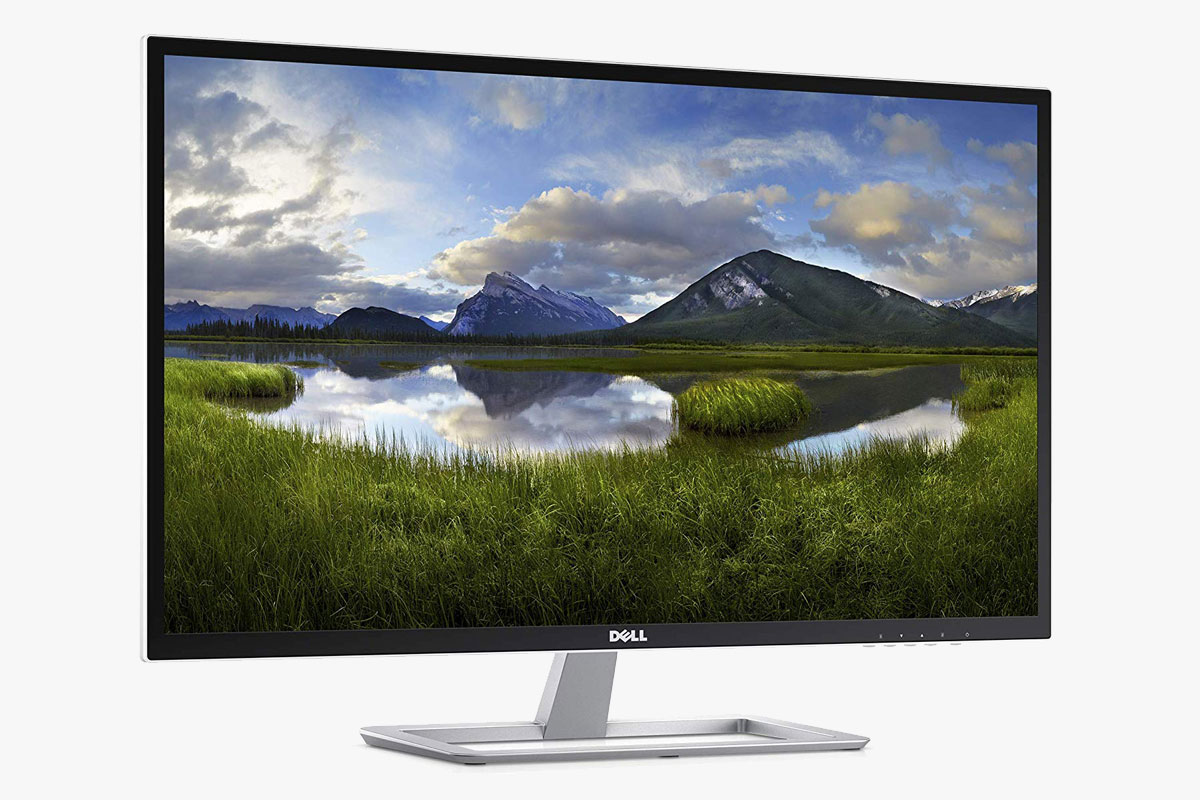 Dell D3218HN
Dell D3218HN
If you prefer a large 1080p monitor for more screen space, check out the Dell D3218HN, a 32-inch IPS monitor with a 60 Hz refresh rate and a 16:9 aspect ratio. It’s a well-rounded unit with decent picture quality and surprisingly good gaming performance. It sells for less than $200, which is good news for those who want to go big but prefer to keep their expenses low.
The D3218HN is designed for professional use, but it has a different design compared to Dell UltraSharp monitors. It has a much more basic design, with a plain white back panel and a fixed stand with tilt as the only adjustment option. Since it has a VESA mounting interface at the back, the monitor can be mounted to a more flexible monitor stand for better ergonomics. This Dell monitor has the exact same set of input ports as the HP monitor above, only featuring one HDMI port and one VGA port, with no USB hub and DisplayPort.
For office work, the D3218HN is a good monitor, with its large screen allowing for easy management of multiple open windows. It has a low pixel density, though, so the image is not going to be as sharp as with smaller 1080p monitors. On the bright side, the monitor has better contrast than most IPS monitors and offers good gaming performance, with fast response time and low input lag. If you want a large 1080p monitor that’s suitable for both office work and regular gaming, consider this budget monitor from Dell.
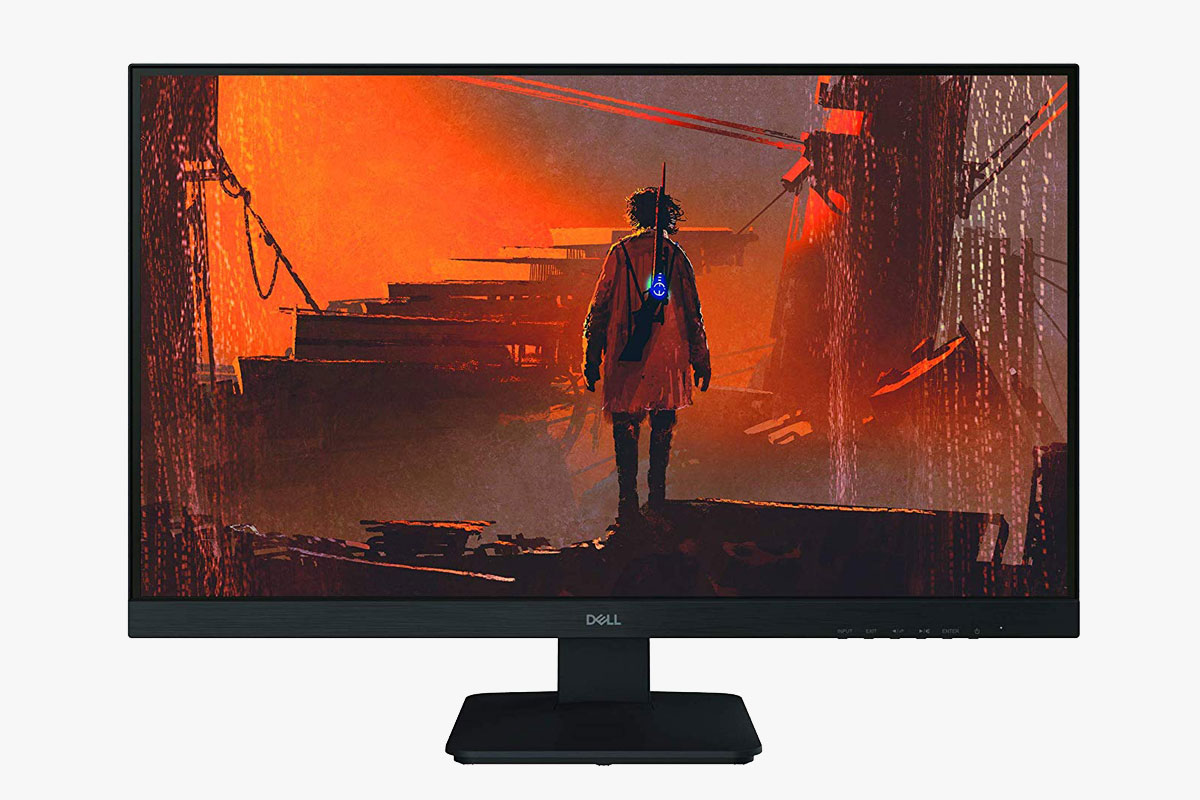 Dell D2719HGF
Dell D2719HGF
The Dell D2719HGF is the complete opposite of the Dell D3218HN – it’s built specifically for gaming instead of professional use, boasting an extremely fast response time and a very low input lag. It has a TN panel, which is more suitable for gaming than office work, and features a 144 Hz refresh rate.
A 27-inch display, this Dell monitor has a plain design, with none of those futuristic aesthetics and lighting systems seen in some high-end gaming monitors. It has a plain black chassis with good build quality, featuring built-in speakers and a USB hub. The USB ports are located at the rear, along with the HDMI port and DisplayPort. Like the Dell 32-inch monitor, this unit comes with a fixed stand with very limited adjustment options.
The D2719HGF is an excellent monitor for fast-paced games. As mentioned, the response time is extremely fast while the input lag is low – both of which are especially beneficial in competitive gaming, where being able to react on time is crucial. In addition, the monitor supports FreeSync, which synchronizes the monitor refresh rate to the graphics card output for screen-tear-free gaming. All in all, the D2719HGF is a great budget gaming monitor, offering good value for the money.
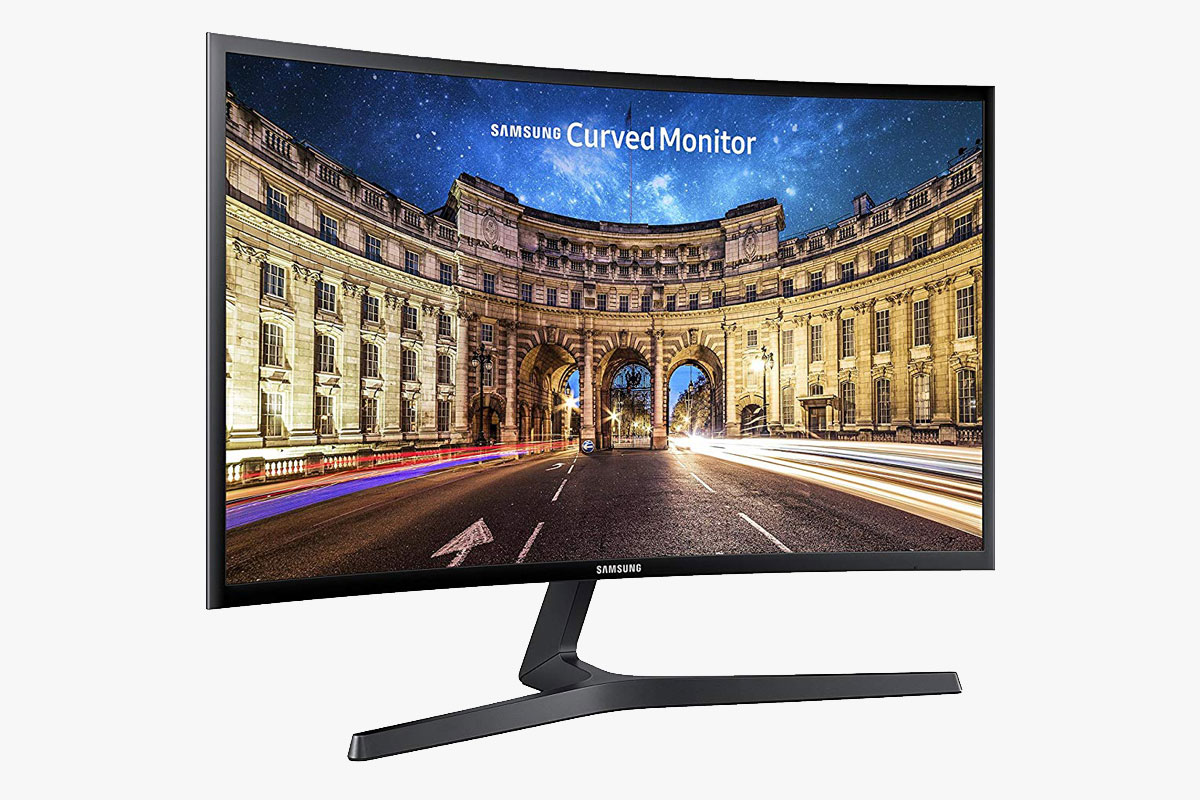 Samsung C27F398
Samsung C27F398
The Samsung C27F398 is a 27-inch VA monitor suitable for all-around use, offering decent picture quality and good gaming performance. It has a 60 Hz standard refresh rate, which can go up to 72 Hz when FreeSync is enabled while playing games.
Unlike the previous three products on this list, this Samsung 1080p monitor features a curved screen, with a sharp curve radius of 1800R, which translates to a more pronounced curvature. But if you take away the curved screen, it’s just as plain as the other monitors. It’s got a small joystick for navigating the on-screen display (OSD) and includes one HDMI port and one DisplayPort for input. As expected from a budget product, the monitor stand has poor ergonomics, only offering a tilt option.
The C27F398 has decent picture quality. It has a high contrast ratio, which is great for both gaming and watching movies. The color accuracy is excellent, but only after a full calibration. The gaming performance is also good, with the monitor featuring a fast response time for a VA panel and a low input lag. You can use this unit for productivity, but you might find its narrow viewing angles a limiting factor in some applications.
You may also be interested in some of the best G-sync monitors from our list. Check them out.
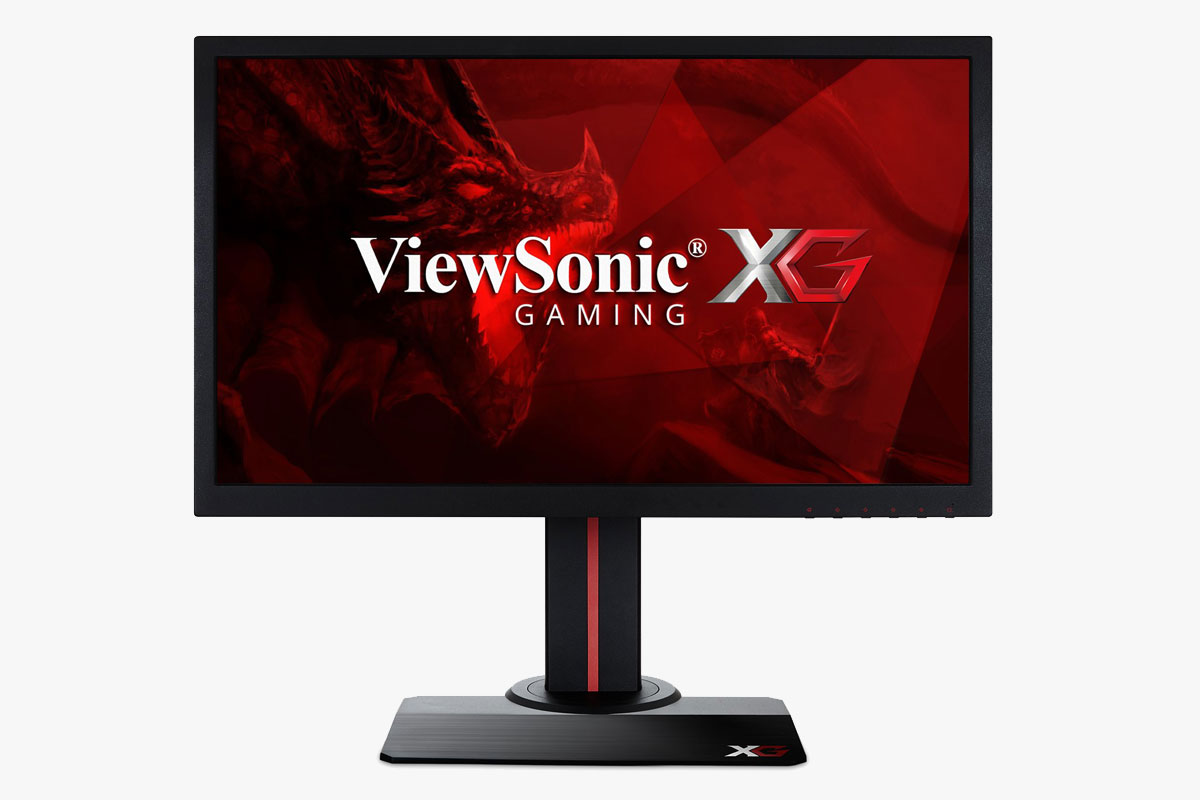 ViewSonic XG2402
ViewSonic XG2402
Often considered one of the best TN monitors currently out, the ViewSonic XG2402 is an excellent monitor for gaming, featuring an extremely fast response time and a 144 Hz refresh rate. You can use it for both PC and console gaming, with the HDMI input port allowing for compatibility with PS4 and Xbox One consoles.
The XG2402 is a 24-inch monitor with a stylish design, featuring a cool lighting system. The control buttons are at the bottom of the monitor while the connection ports are all down-facing on the back panel. The connection ports include one DisplayPort, two HDMI ports, one headphone port, and two USB 3.0 down ports. Offering height, tilt, swivel, and pivot adjustments, the default stand is well built and easily supports the monitor.
Although it’s decent enough for general use, this ViewSonic monitor for PS4 and Xbox one is best used for gaming. It has excellent gaming performance, with very low input lag and a wide FreeSync range. FreeSync is supported over both HDMI and DisplayPort – the former compatibility is great if you plan to use this monitor for Xbox One gaming.
While not as good as IPS monitors, the XG2402 also offers decent picture quality for a TN monitor, with good out-of-box color accuracy and good brightness. You can use it for internet surfing and some basic office work, but if you want a monitor that’s more suitable for all-around use, there are better options out there.
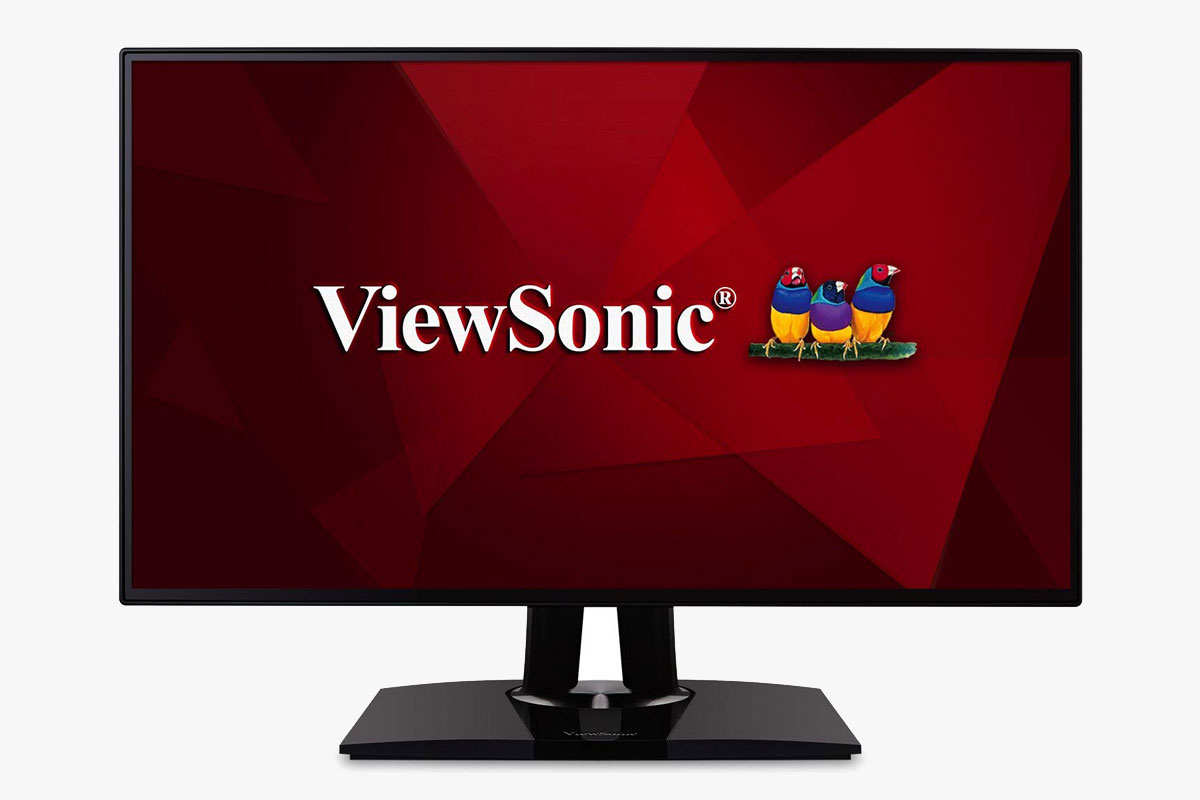 ViewSonic VP2468
ViewSonic VP2468
The ViewSonic VP2468 is a 24-inch IPS monitor designed for professional use, offering better picture quality and more connection options than the similarly priced ViewSonic XG2402. It has a 60 Hz refresh rate (which is common among professional monitors) and comes with a fully adjustable stand.
Compared to the XG2402, the VP2468 has a much more office-friendly design, featuring a minimalist chassis with thin bezels all around and a simple back panel. The stand, which connects to the central area of the back panel, has basic cable management and supports the monitor well.
All connection ports are down-facing at the rear; the ports include two HDMI ports, one DisplayPort, one Mini DisplayPort, one DisplayPort Out, one audio out port, and a total of four USB 3.0 downstream ports. The Mini DisplayPort is useful if you want to connect the monitor to a laptop that supports that input option, while the DisplayPort Out is great if you want to build a daisy-chained multi-monitor setup.
The VP2468 is a suitable monitor for productivity. It has great color accuracy (which is important in color-critical work), wide viewing angles, and decent brightness. You can use it as a primary or intermediary monitor in a daisy chain setup. Since it has a 1080p resolution and 60 Hz refresh rate, it can be chained with three other monitors with the exact same resolution and refresh rate. It’s a great product overall and is much better for productivity and general use than the XG2402.
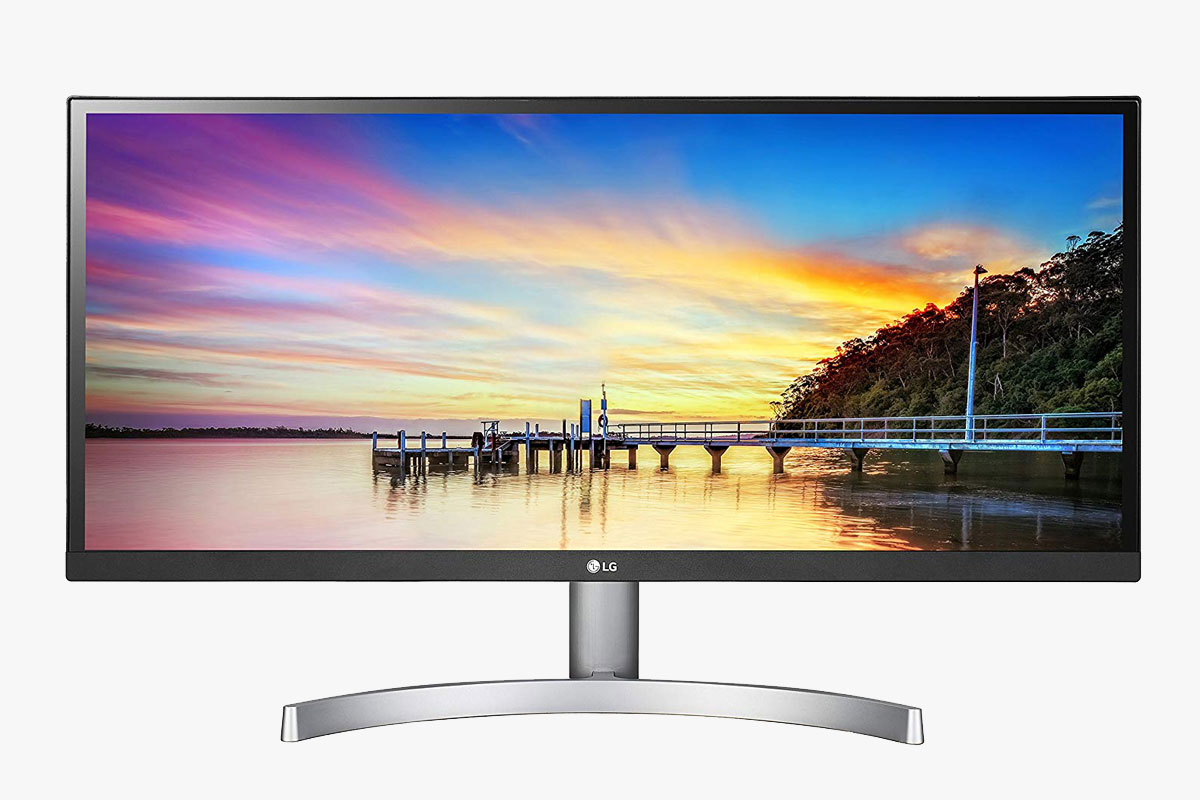 LG 29WK600-W
LG 29WK600-W
If you want a 1080p monitor in an ultrawide format, consider the LG 29WK600-W, which features a 2560×1080 resolution and a 21:9 aspect ratio. It’s one of the more budget-friendly ultrawide monitors on the market, selling for less than $300. It has an IPS panel and supports HDR content, which is a big plus for some people.
The 29WK600-W is a 29-inch display with a non-curved screen, which is notable since most ultrawide monitors these days feature a curved screen. It has one DisplayPort and two HDMI ports for input, all of which are outward-facing at the back, which makes them easy to access. The monitor features surprisingly decent-sounding built-in speakers, which is a nice bonus. On the other hand, the default stand is disappointing; although it supports the monitor well, it has mediocre ergonomics, only offering tilt adjustment.
This LG product is an ideal display for productivity, with the ultrawide format allowing for easy management of multiple open windows. The overall picture quality is good, with good color accuracy and wide viewing angles. While not as good as gaming monitors, this LG monitor is also a solid unit for regular gaming – it supports FreeSync and has a good response time. If, however, you want the opposite and prefer an ultrawide display that’s a gaming monitor first and foremost, check out the other LG product on this list.
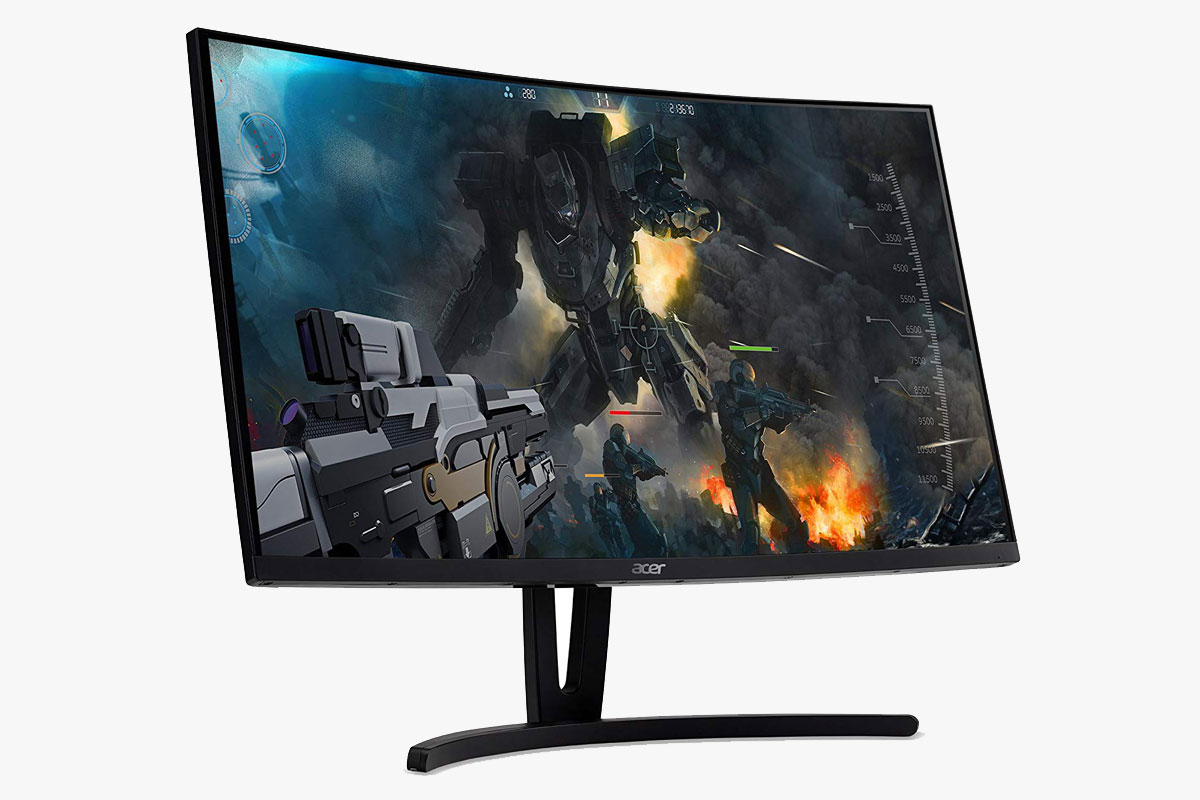 Acer ED273
Acer ED273
The Acer ED273 is a recommended option if you want a VA monitor that offers better gaming performance than the Samsung C27F398. It’s a 27-inch curved monitor with a 144 Hz refresh rate, which translates to increased smoothness when gaming. It’s also a good monitor for watching movies, with the high contrast ratio making for more vibrant images.
Like with Samsung’s offering, this monitor’s curved screen has a sharp curvature of 1800R, which means the curve is more aggressive. For input, the monitor has one HDMI port, one DisplayPort, and one DVI port. There are no USB ports on this monitor, which might disappoint some of you, especially considering there are many similarly priced monitors that offer at least two USB ports.
The ED273 is a great monitor for gaming. It has a good response time for a VA monitor and a low input lag. It supports FreeSync as well, with an effective range of 48-144 Hz. Moreover, this monitor is an official “G-Sync Compatible” monitor, which means it’s possible to use variable refresh rates when connected to certain Nvidia graphics cards. If you like the Samsung C27F398 but prefer something much more suitable for pure gaming, get this Acer product instead.
Our guide to the top console gaming monitors features more amazing options for gamers. Don’t miss them.
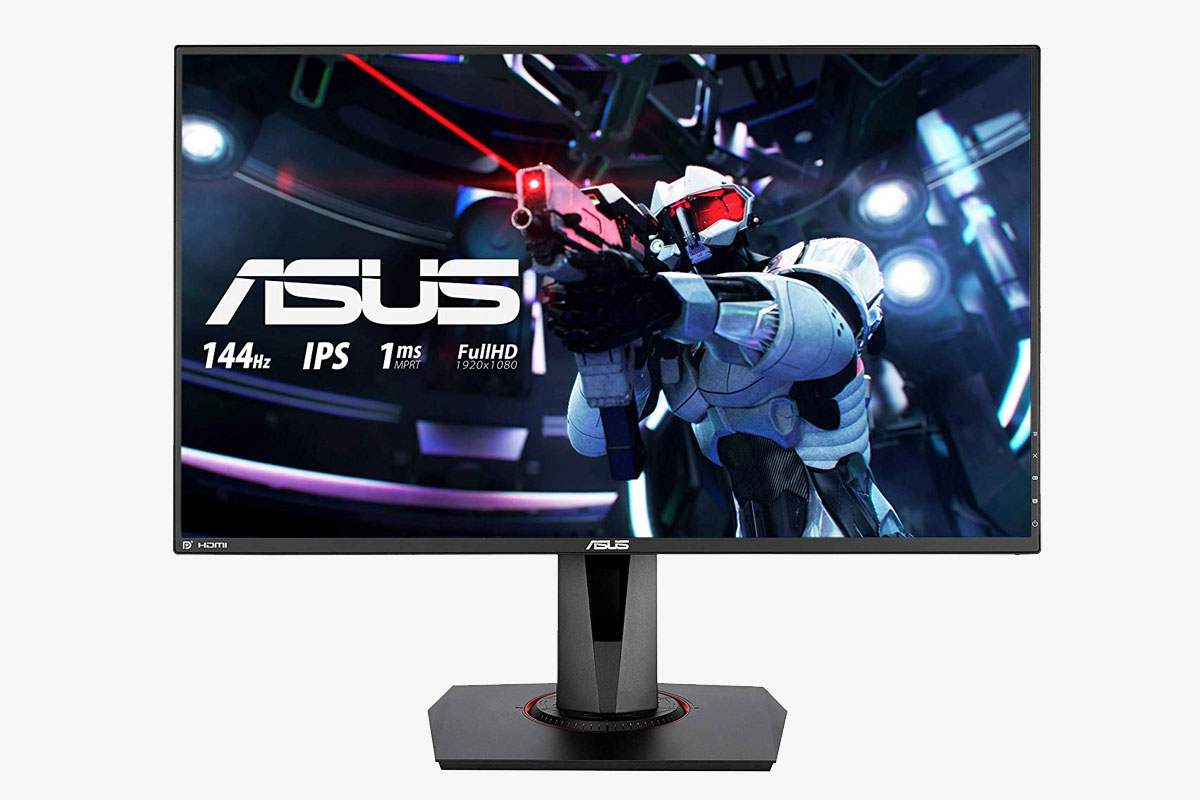 Asus VG279Q
Asus VG279Q
Selling for around $300-350, the Asus VG279Q is an excellent monitor for all-around use. Although it’s obviously marketed for gaming, it’s also a great monitor for office work. It’s a 27-inch display with an IPS panel and a 144 Hz refresh rate, featuring superb ergonomics and multiple input options.
While not as flashy as some monitors under the Asus Republic of Gamers (ROG) brand, the VG279Q has a stylish design that easily gives it away as a gaming-focused product. It has thin bezels all around and features a small joystick for menu control. The default stand, which has integrated cable management, offers excellent ergonomics, with options to adjust the height, tilt, swivel, and rotate to portrait mode.
For input, this Asus product has one HDMI port, one DisplayPort, and one DVI port – all of which are down-firing at the back, along with the analog audio port. There are no USB ports on this monitor, much less alternative input ports such as Mini DisplayPort and USB-C. On the bright side, FreeSync is supported over both DisplayPort and HDMI, with the exact same range of 40-144 Hz.
The VG279Q is a brilliant monitor for gaming, featuring an exceptional response time for an IPS monitor and a very low input lag. It’s great for different kinds of games, including first-person shooters, sports games, and action RPGs, with FreeSync keeping things smooth when the graphics card output is erratic. The overall picture quality is good, with good color accuracy out of the box, wide viewing angles, and good brightness. If you want a gaming monitor that also works great for office work and general use, get the VG279Q.
Here are some of the best-selling budget 4K monitors on the market. Check them out.
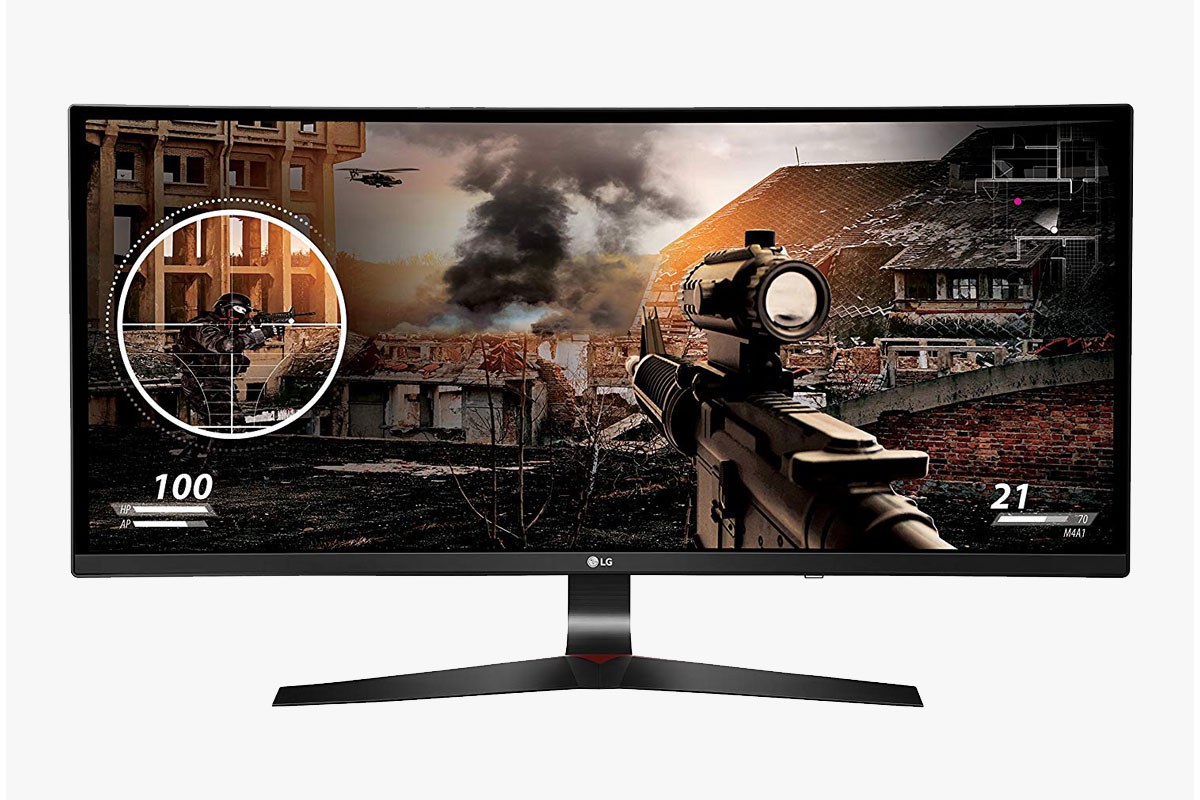 LG 34UC79G-B
LG 34UC79G-B
The LG 34UC79G-B is a more gaming-focused 1080p ultrawide monitor than the LG 29WK600-W, featuring a much higher refresh rate and a curved screen for more immersion. It’s an IPS monitor with a 2560×1080 resolution and a 144 Hz refresh rate, which is great for gaming.
A 34-inch display, this LG ultrawide monitor has a slightly more stylish design compared to most other LG monitors, with red accents in some parts. The default stand, which offers height and tilt adjustments, has a Y-shaped base, instead of the crescent-shaped base commonly seen in LG displays.
The screen has a curve radius of 3800R, which translates to a softer or less pronounced curvature compared to 1800R/1900R curved monitors. The 34UC79G-B has better connectivity than the Asus gaming monitor above, offering one DisplayPort, two HDMI ports, two USB 3.0 down ports, and two analog audio out ports. One of the audio ports is a gaming headsets port with direct volume adjustment while the other one is a standard line out.
Featuring a fast response time and a consistently low input lag, the 34UC79G-B is a great monitor for gaming, especially if you love to play first-person shooters, racing games, and flight simulators. It has FreeSync support, and while it’s not an official “G-Sync Compatible” monitor, it also allows for variable refresh rates when connected to certain Nvidia graphics cards.
For productivity, the 34UC79G-B is a good display, with the large ultrawide screen allowing for easy multitasking. It has good overall picture quality, with great viewing angles and fairly decent contrast for an IPS panel. Overall, this LG product is a recommended display if you want an ultrawide monitor that’s suitable for both productivity and gaming.
Buyer’s Guidelines
Whether you are shopping for the best 1080p monitors for productivity or gaming, there are several aspects to consider, including the screen size and panel technology. Here are a few quick pointers when considering the technical specifications of monitors:
Screen Size
Monitors smaller than 25 inches are great for all-around use and are the most recommended. They have good pixel density and look great whether you are sitting less than two feet from the screen or from three feet out. They are great for competitive gaming because they allow you to easily see the entire screen. On the other hand, they are not as immersive as larger monitors and are not ideal for multitasking due to their more limited screen space.
Larger 27-inch and 32-inch 1080p monitors offer more screen space, which is good for multitasking with multiple open windows. However, they have a lower pixel density, which means texts and images will not be as sharp, most especially on 32-inch monitors. They are fine for watching movies and regular gaming, but they don’t look as good as smaller monitors when viewed up close.
There are also ultrawide 1080p monitors, which feature a 2560×1080 native resolution and a 21:9 aspect ratio. They are great for multitasking due to their wider screen and make for a more immersive experience when playing racing games, first-person shooters, and action RPGs.
For office work, 25-inch and 29-inch ultrawide monitors are good options – the latter of which offers a pixel density similar to that of regular 24-inch 1080p monitors. For gaming, 34-inch ultrawide monitors, which have the same pixel density as regular 27-inch 1080p monitors, are more suitable because they offer a more immersive experience, especially if the screen is curved.
Panel Type
When shopping for monitors, one of the most important aspects to consider is the panel type or panel technology. There are three panel types: In-Plane Switching (IPS), Twisted Nematic (TN), and Vertical Alignment (VA).
For office work and general use, IPS monitors are the best since they offer the best color reproduction and viewing angles. VA monitors are also decent for productivity, but their narrow viewing angles could be a problem for some people. While there are some models with decent picture quality, TN monitors are not recommended for non-gaming use due to their subpar picture quality and poor viewing angles.
For watching movies, both IPS and VA monitors are good options. Some prefer the better viewing angles of IPS monitors while others find VA monitors more suitable due to their higher contrast ratio, which leads to more vibrant images.
For fast-paced games or competitive gaming, TN monitors are great because they offer the fastest response times. They are great for games such as Counter-Strike: Global Offensive, Overwatch, and other games where response times, input lag, and refresh rates are more important than overall picture quality.
On the other hand, IPS and VA monitors are more suitable if you mostly play single-player games and care about picture quality more than anything else. They are great for graphically intensive games such as Final Fantasy XV and The Witcher 3: Wild Hunt. VA monitors, in particular, are ideal for survival horror games, where a high contrast ratio is especially beneficial in dark sections. IPS and VA monitors are also good for first-person shooters and other fast-paced games, with some models featuring fast response times, high refresh rates, and very low input lag.
If you want a monitor strictly for fast-paced competitive games, go for TN gaming monitors. But if you want a more rounded unit that works well for both office work and gaming, consider IPS and VA monitors, which are usually more expensive.
Refresh Rate
Measured in Hertz (Hz), the refresh rate is the number of times a monitor updates or refreshes the image on the screen per second. If a monitor has a 60 Hz refresh rate, it means it refreshes the image on the screen 60 times per second.
If you are going to use your monitor mainly for office work or productivity, a 60 Hz refresh rate is more than enough. The same thing goes if you want to use your monitor for console gaming, as console games typically don’t go over 60 frames per second.
The monitor refresh rate is more important in gaming – a higher refresh rate translates to increased smoothness in games, which is especially beneficial in fast-paced games. If you mostly play fast-paced games and want everything to be as smooth as possible, go for 1080p monitors with a refresh rate higher than 100 Hz. On the other hand, a 60 Hz refresh rate is good enough for regular gaming, where overall picture quality is more important.
Connectivity
Not all monitors feature the exact same set of connection ports. The most common video input ports seen in 1080p monitors are HDMI 1.4 and DisplayPort 1.2, with the latter allowing for higher refresh rates. The former input port is pretty much guaranteed in most monitors currently out while the latter is sometimes excluded in some budget models.
If you want to use your monitor for console gaming, the only port that matters is HDMI, which is the display interface used by gaming consoles. An HDMI 1.4 port on a 1080p monitor is fine for console gaming – unlike with 4K monitors, which is limited to 30 Hz when connected via HDMI 1.4.
Some monitors also feature an older port like VGA, which is useful if you want to connect an older computer. The input port rarely seen in 1080p monitors is USB-C, which can support video input, data transfer, and power delivery using a single cable.
While many 1080p monitors only include the essentials, there are also units that include additional connection ports, such as a USB hub and a DisplayPort Out. The former is convenient if you want to connect peripherals directly to your monitor, while the latter is useful for daisy chaining. (A daisy chain setup is a multi-monitor setup where only one monitor is directly connected to the computer, which makes for a more clutter-free setup with fewer cables.)
You can daisy chain up to four 1080p monitors, provided the primary and intermediary monitors all support daisy chaining and come with a DisplayPort Out. The only monitor that does not require a DisplayPort Out is the last monitor in the chain. You can also build a daisy chain setup composed of one 1440p monitor and a couple of 1080p monitors, as long as the refresh rate of all units is 60 Hz.
G-Sync/FreeSync
G-Sync and FreeSync are adaptive synchronization technologies that allow for variable refresh rates in a display – the former is an Nvidia technology while the latter is under AMD. When G-Sync/FreeSync is enabled, the monitor refresh rate dynamically adapts to the graphics card output. For example, if the graphics card is pushing out 43 frames per second, G-Sync/FreeSync will change the monitor refresh rate to 43 Hz. This eliminates the visual artifact known as “screen tearing” and is especially beneficial when playing graphically intensive games at very high settings.
While they are essentially the same in functionality, G-Sync and FreeSync are implemented differently in monitors. G-Sync monitors offer a more premium gaming experience, with consistent performance and wide effective ranges, but they are more expensive and only work with Nvidia graphics cards.
FreeSync monitors are not uniform in performance, especially regarding the effective range. On the other hand, they are cheaper and more widely available. In addition to their native compatibility with AMD graphics cards, some FreeSync monitors also allow for variable refresh rates when connected to certain Nvidia graphics cards. And unlike with G-Sync monitors, some FreeSync monitors also support FreeSync over HDMI, which is great if you want to use FreeSync on Xbox One consoles.
G-Sync/FreeSync is beneficial if you find screen tearing distracting, mostly play graphically intensive games at max or near-max settings, or want a more futureproof setup. If you don’t care about screen tearing or own an extremely powerful computer that can easily keep up with 144 Hz monitors, then you might not fully appreciate the benefits of G-Sync/FreeSync. Obviously, G-Sync/FreeSync is not an important factor if you are simply going to use your monitor for office work.
Our Recommendations
Still can’t decide which of the best 1080p monitors is the best for you? Here are our recommended picks for different usages. If you want an all-around monitor for office work, gaming, and general use, the Asus VG279Q is the best option. It has good picture quality and excellent gaming performance and boasts excellent ergonomics.
For pure gaming, the ViewSonic XG2402 – a TN monitor with a 144 Hz refresh rate and an extremely fast response time – is the best option, especially if you want a unit that includes a USB hub and a fully adjustable stand. On the flip side, the ViewSonic VP2468 is our recommended product if you want a monitor designed specifically for professional use, with the LG 29WK600-W being a good alternative if you prefer more screen space for multitasking.
